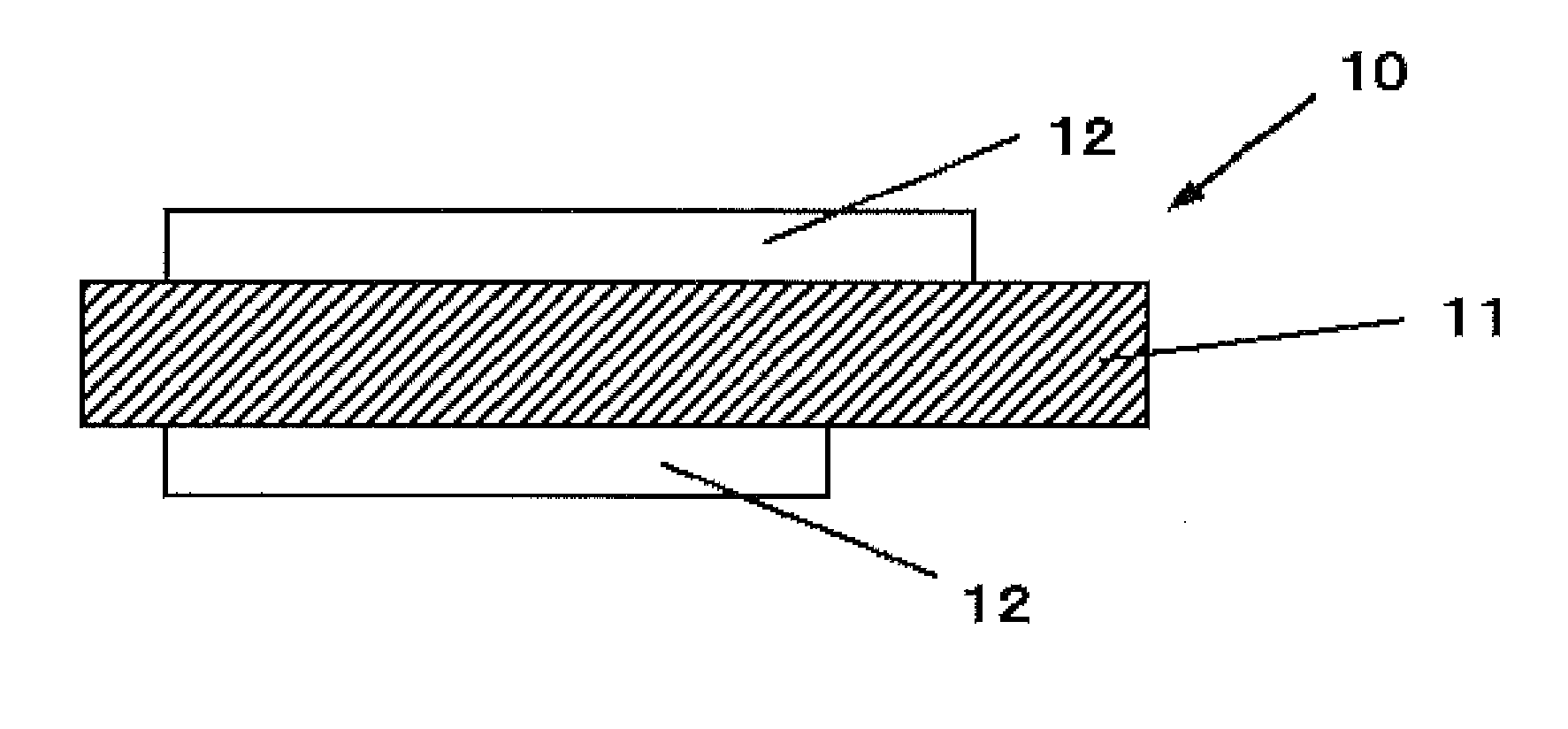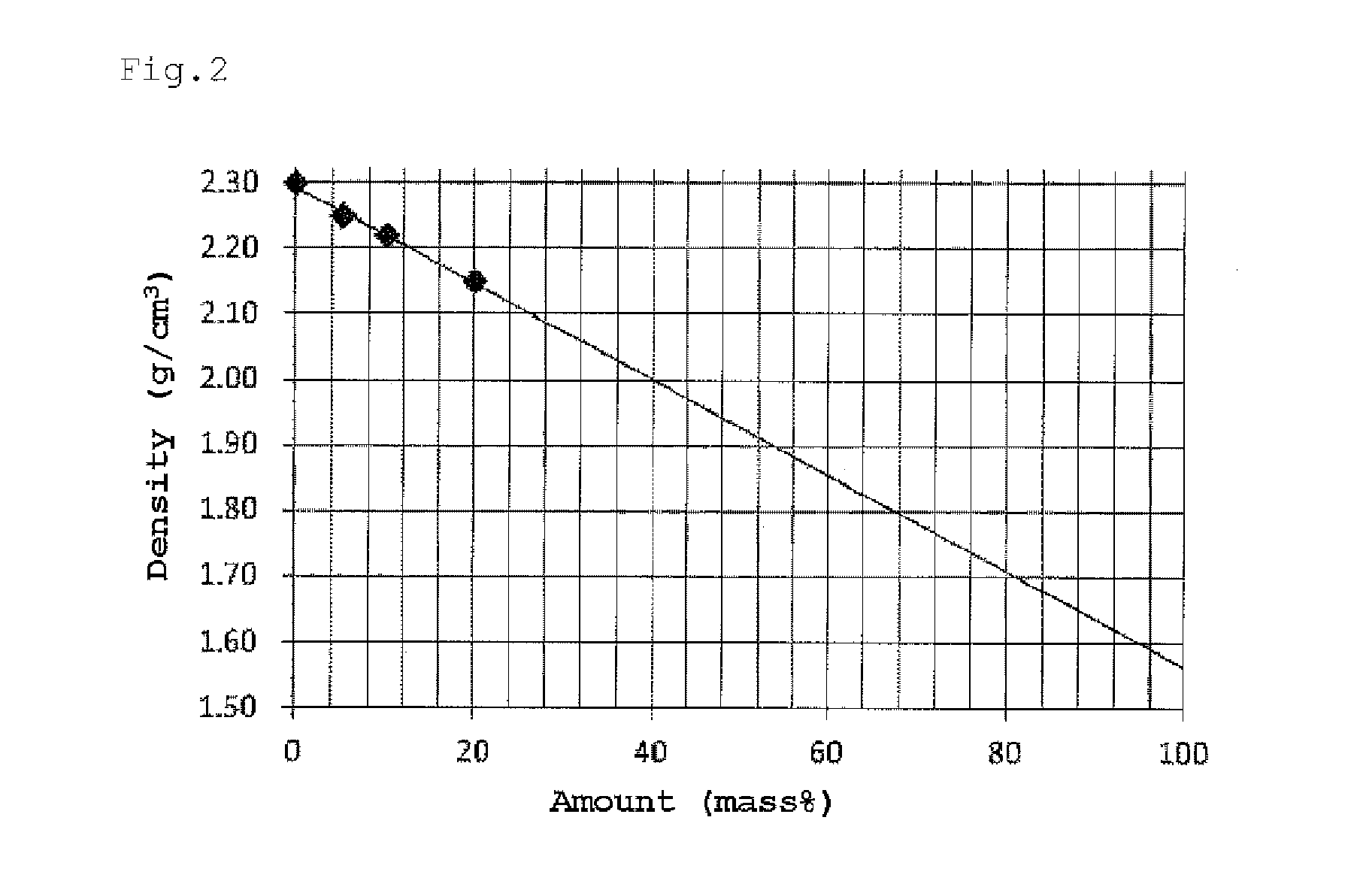Negative electrode active material for non-aqueous electrolyte secondary battery, negative electrode for non-aqueous electrolyte secondary battery, non-aqueous electrolyte secondary battery, and method of producing negative electrode material for a non-aqueous electrolyte secondary battery
- Summary
- Abstract
- Description
- Claims
- Application Information
AI Technical Summary
Benefits of technology
Problems solved by technology
Method used
Image
Examples
example 1-1
[0197]The laminate film secondary battery 20 shown in FIG. 3 was produced by the following procedure.
[0198]The procedure began with the production of a positive electrode. Positive electrode active materials of 95 mass parts of LiCoO2 (lithium cobalt complex oxide), 2.5 mass parts of positive-electrode conductive additive (acetylene black), and 2.5 mass parts of positive-electrode binders (polyvinylidene fluoride, PVDF) were mixed to produce a positive-electrode mixture. The positive-electrode mixture was dispersed in an organic solvent (N-methyl-2-pyrrolidone, NMP) to form paste slurry. The slurry was applied to both surfaces of a positive electrode current collector with a coating apparatus having a die head and dried with a drying apparatus of hot-air type. The positive electrode current collector had a thickness of 15 μm. The resultant was finally compressed with a roll press.
[0199]Secondly, a negative electrode was produced. For the production of a negative electrode active mat...
examples 1-2 to 1-5
, Comparative Examples 1-1 and 1-2
[0206]A secondary battery was produced as in example 1-1 except that the amount of oxygen was adjusted in the silicon compound expressed by SiOx.
[0207]The silicon-based active material particles in examples 1-1 to 1-5 and comparative examples 1-1 and 1-2 had the following physical properties: the silicon compounds contained in the silicon-based active material particles had a peak area ratio A / B of 0.6 and a peak area ratio (A+B) / C of 0.32, obtained by 29Si-MAS-NMR spectrum; the silicon-based active material particles had a median diameter D50 of 5.1 μm; the half width (2θ) of the diffraction peak attributable to an Si(111) crystal face and obtainable by X-ray diffraction was 1.85°; the crystallite size attributable to the Si(111) crystal face was 4.62 nm.
[0208]The silicon-based active material particles in examples 1-1 to 1-5 and comparative examples 1-1 and 1-2 also had the following properties: the amount of the carbon coating was 5%; the carbon ...
examples 2-1 to 2-3
, Comparative Example 2-1 to 2-3
[0229]A secondary battery was produced as in example 1-3 except that the conditions of the carbon coating with which the silicon compound was coated were adjusted to change the compression resistivity exhibited when the carbon coating is separated and compressed so as to have a density of 1.0 g / cm3, and compression density exhibited when the carbon coating is separated, put into a measurement container such that a mass per unit area of the carbon coating is 0.15 g / cm2, and then compressed under a pressure of 50 MPa. The compression resistivity and the compression density when measured after the carbon coating is separated from the silicon compound were changed by adjusting the CVD temperature, time, degree of stirring the powder material (silicon compound powder) during CVD, and a CVD gas flow rate.
[0230]The cycle performance and the first charge and discharge efficiency of the secondary batteries in examples 2-1 to 2-3 and comparative examples 2-1 to...
PUM
 Login to View More
Login to View More Abstract
Description
Claims
Application Information
 Login to View More
Login to View More - R&D
- Intellectual Property
- Life Sciences
- Materials
- Tech Scout
- Unparalleled Data Quality
- Higher Quality Content
- 60% Fewer Hallucinations
Browse by: Latest US Patents, China's latest patents, Technical Efficacy Thesaurus, Application Domain, Technology Topic, Popular Technical Reports.
© 2025 PatSnap. All rights reserved.Legal|Privacy policy|Modern Slavery Act Transparency Statement|Sitemap|About US| Contact US: help@patsnap.com



